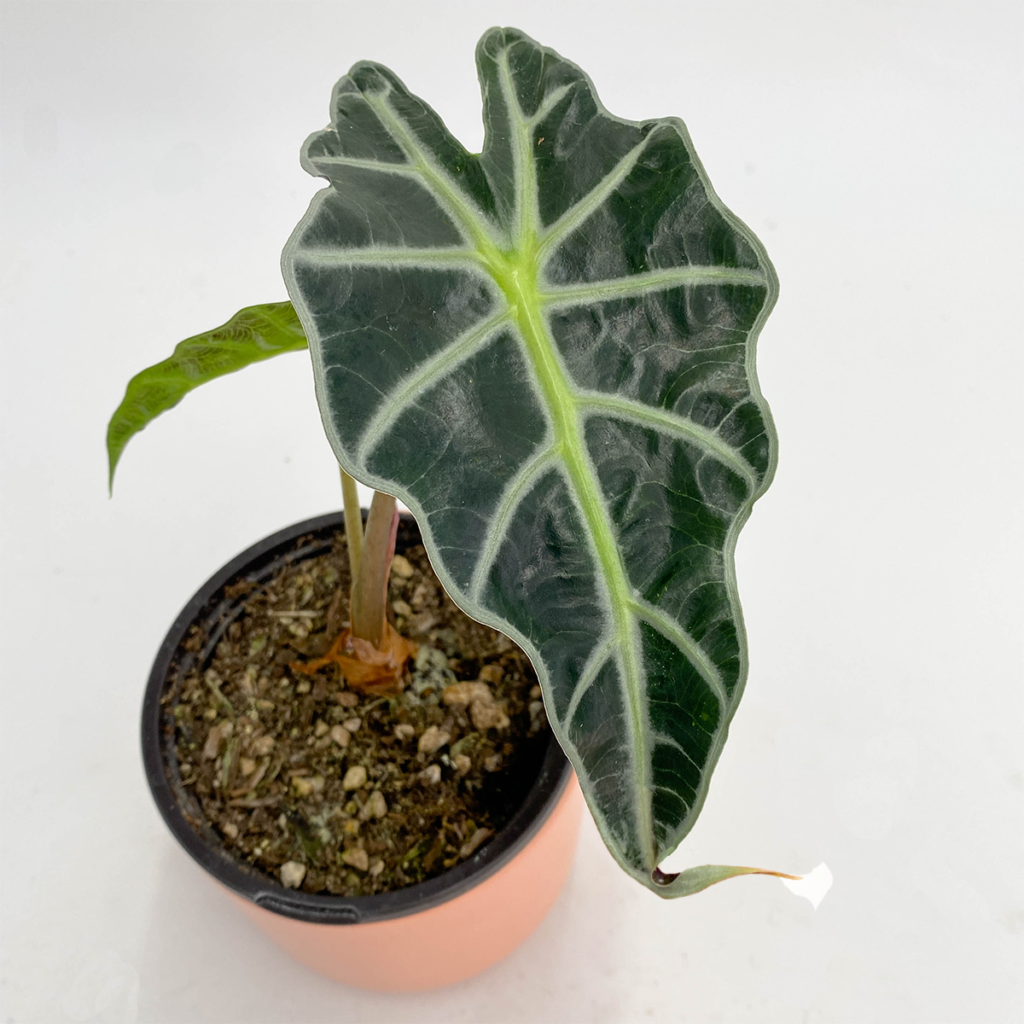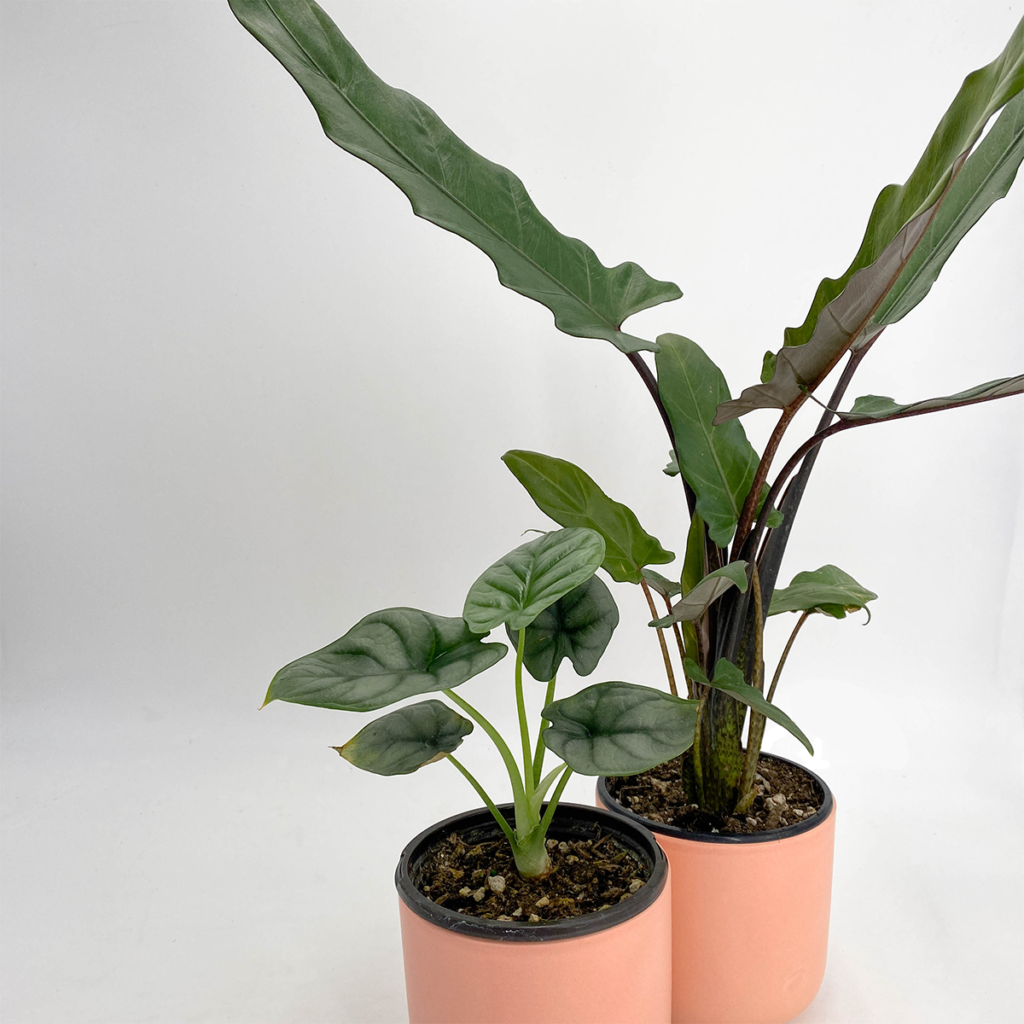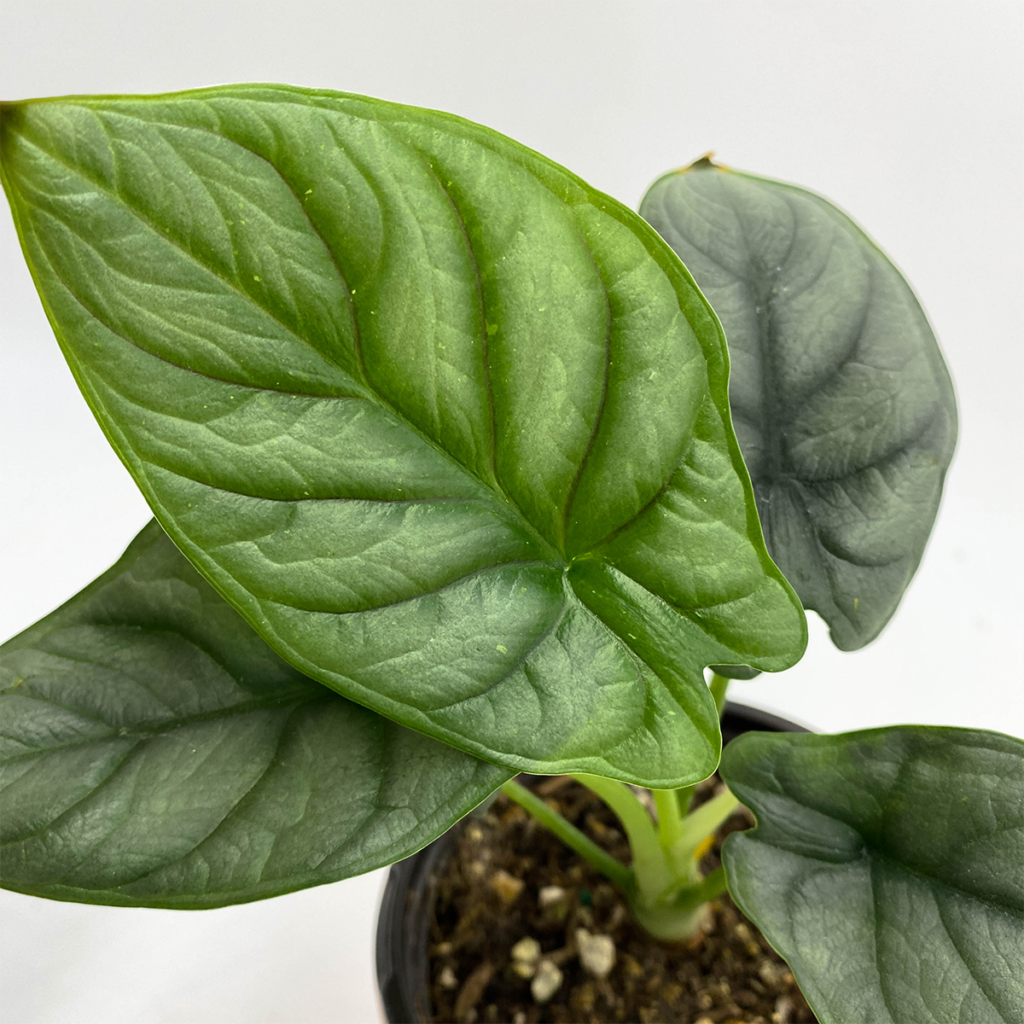Alocasias are one of the most instantly identifiable plants on the market right now. Large, stunning leaves with distinctive venation that sprouts from a single tuber in the soil, they are an attractive force to be reckoned with. Originating from tropical forests of Asia and Easter Asia, these plants could often be found under the tree canopy. Because of this, they would develop large, striking leaves to beat out the other plants for sunlight. During the growing season, these bad boys are fast growers and can pop out many leaves given proper lighting and watering conditions. They are also a rather forgiving plant, being able to be regrown from just a chunk of its tuber.
Watering
Alocasias are one of the more water loving plants. Seeing as they grow in rainforests, it’s no surprise that they want their soils to be more damp than some of their other tropical friends. Never wanting to fully dry out, make sure you keep them at an even, but not soggy moisture level. Some surface drying is necessary to avoid waterlogging the roots. These plants do however go dormant during the colder months. Feel free to cut back on watering during periods of dormant growth.
Light
Alocasias can tolerate a wide variety of lighting levels, though the amount of light you give it will determine how quickly it grows. While they tolerate low lighting conditions, they really thrive in bright, filtered light. Think an east or west facing window or a south window with a sheer curtain over it. Larger varieties can even be trained to handle full sun, though this takes some time. It would be a good idea to ask the grower if they are sun trained before placing in a spot that receives a lot of direct sunlight. Another benefit of placing you alocasias in areas with brighter light is that the leaf color is typically stronger and brighter in higher light areas.
Humidity
Considering their tropical origins, it should come as no surprise that alocasias really thrive when placed in areas with higher humidity. This can be achieved by placing your plant either by a humidifier or on a pebble tray filled with water. If you go the pebble tray route, make sure that your plant is not sitting in any water, as this will surely lead to root rot.
Fertilizing
Being fast growers while in active growth, your alocasia would really benefit from some added boosts in the form of fertilizer. Using an all purpose fertilizer once or twice a month during periods of active growth will produce major benefits to your beautiful plant. Just make sure to follow the instructions on the back of your specific fertilizer to avoid root and nutrient burn. Also take care to avoid fertilizing during dormancy periods

 Alocasia Care – The Taro Plant
Alocasia Care – The Taro Plant

